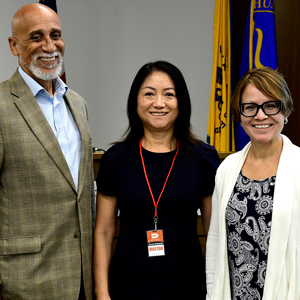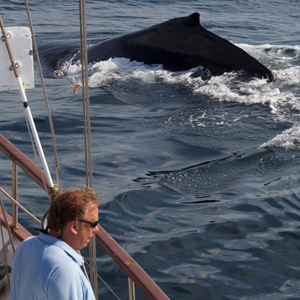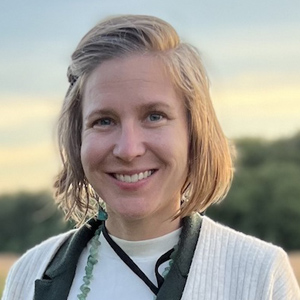The COVID-19 pandemic intensifies the effects of long-standing environmental health problems in the Navajo Nation, which is the largest American Indian reservation, say three NIEHS grant recipients who work closely with the tribe. The territory spans parts of Arizona, Utah, and New Mexico, and is larger than West Virginia and nine other states. About 170,000 people live there.
“It’s horrible right now with the number of cases,” said Jani Ingram, Ph.D., a chemistry and biochemistry professor at Northern Arizona University. By late May, the Navajo Nation had the highest per capita COVID-19 infection rate in the U.S. “The last couple of months really shined a light on water safety and infrastructure issues that have been around for years,” she added.
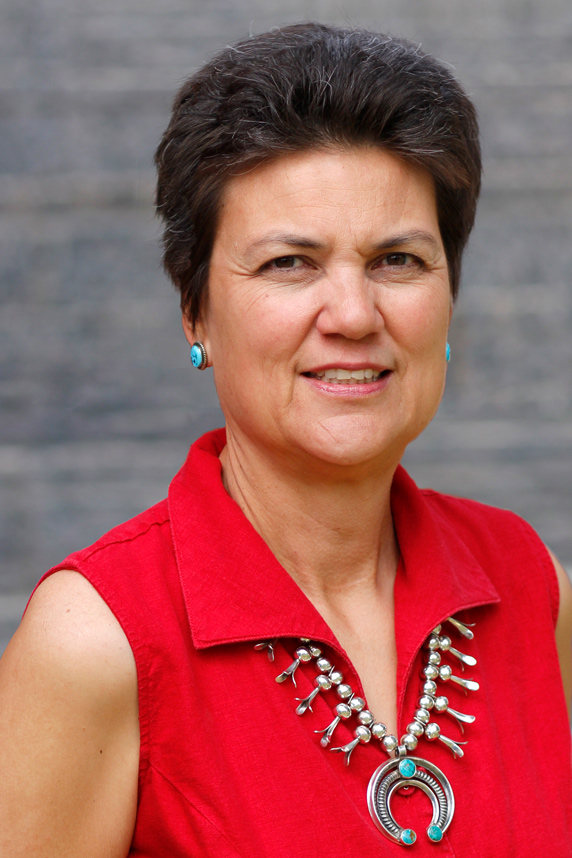 Ingram said one of the most rewarding aspects of her academic work involves training her students, some of whom have close ties to the Navajo community. (Photo courtesy of Northern Arizona University)
Ingram said one of the most rewarding aspects of her academic work involves training her students, some of whom have close ties to the Navajo community. (Photo courtesy of Northern Arizona University)Lack of clean water, indoor plumbing
Ingram works with the University of Arizona Center for Indigenous Environmental Health Research, which receives institute funding. She and her colleague Tommy Rock, Ph.D., both of whom are Navajo, study uranium and arsenic levels in hundreds of unregulated wells. Those levels often exceed U.S. Environmental Protection Agency standards.
Although the wells are intended for livestock, some poor people in rural areas use them for drinking water. “That is due largely to lack of transportation, and limited access to regulated watering points,” said Rock. “And those problems are worse now because of lockdown orders and other restrictions. Unregulated wells become a more attractive option.”
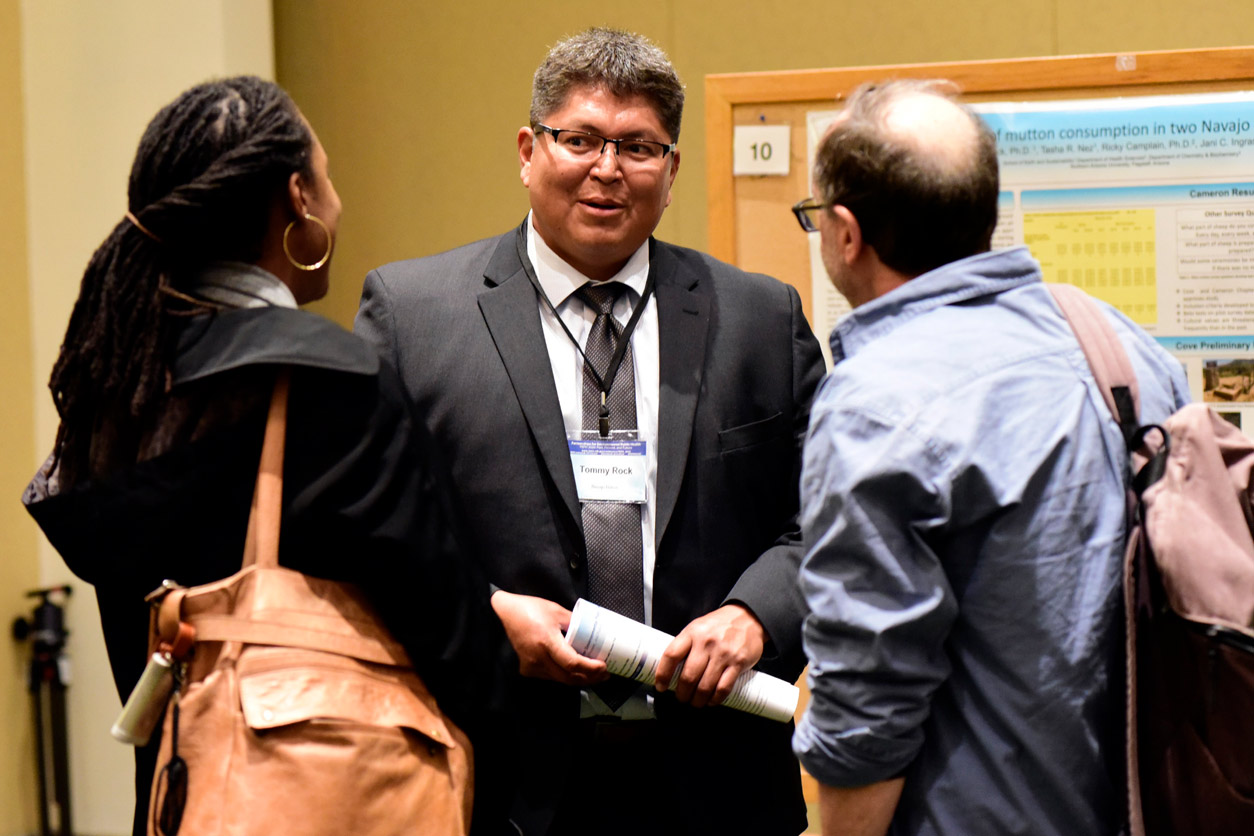 Rock, shown here at the 2020 NIEHS Partnerships for Environmental Public Health meeting, was mentored by Ingram as a doctoral student at Northern Arizona University. (Photo courtesy of Steve McCaw)
Rock, shown here at the 2020 NIEHS Partnerships for Environmental Public Health meeting, was mentored by Ingram as a doctoral student at Northern Arizona University. (Photo courtesy of Steve McCaw)Absence of indoor plumbing is another obstacle on many parts of the reservation. According to some estimates, as many as 40% of residents do not have running water, noted Ingram. “Communities tell us they are seeing a connection between that issue and increased COVID-19 rates,” she said.
A perfect storm
Johnnye Lewis, Ph.D., a professor in the University of New Mexico (UNM) Health Sciences Center College of Pharmacy, previously worked with Ingram and Rock to analyze data related to wells. Among other efforts, she directs the UNM Metal Exposure and Toxicity Assessment on Tribal Lands in the Southwest Superfund Research Center Program, which is funded by NIEHS.
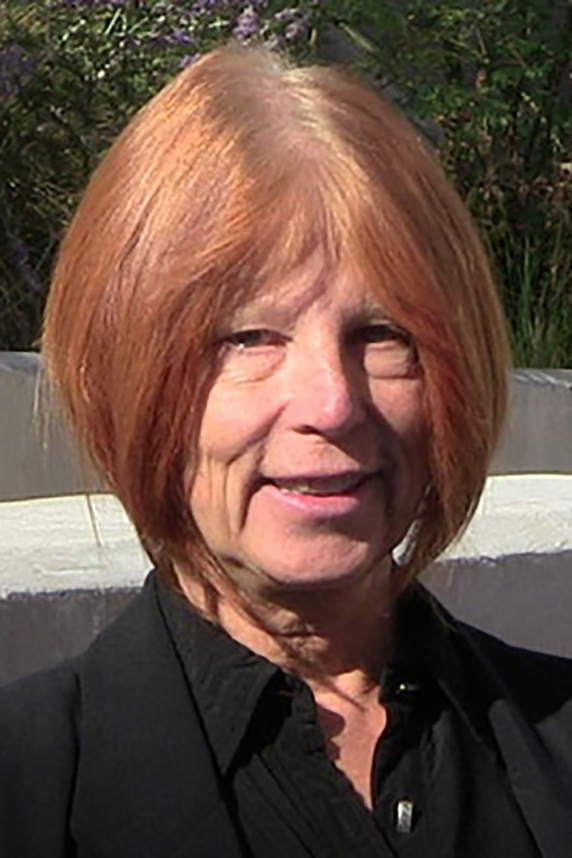 “Hypertension is emerging as one of the greatest risk factors for high COVID-19 severity,” said Lewis. (Photo courtesy of Johnnye Lewis)
“Hypertension is emerging as one of the greatest risk factors for high COVID-19 severity,” said Lewis. (Photo courtesy of Johnnye Lewis)Lewis said that upwards of 1,100 abandoned uranium mines and waste sites across the Navajo Nation represent an ongoing health risk. But there are additional concerns. “With uranium, there are a host of other metals that geologically occur with it. We’re always dealing with mixtures.”
Exposures to uranium and various metals have been linked to conditions such as hypertension and immune dysfunction, which increase vulnerability to COVID-19, according to Lewis. “Genetic factors may predispose Navajo people to immune dysfunction, although how those factors interact with exposures to increase susceptibility or severity is unknown,” she added.
“In many ways, this is a perfect storm,” said Lewis. “Clinicians have suggested to us that they frequently see real difficulty in the population to mount an effective immune response to infection in general, raising concerns about unique sensitivity to COVID-19 as well.”
Working with communities
All three researchers said that going forward, they will continue to study how various environmental factors may affect the Navajo Nation. But they stressed that a key part of that work happens outside of the lab, when they connect with communities to share their findings, listen to residents’ concerns, and otherwise help to improve life on the reservation. For example, Rock has conducted workshops on uranium to educate local groups about potential health risks.
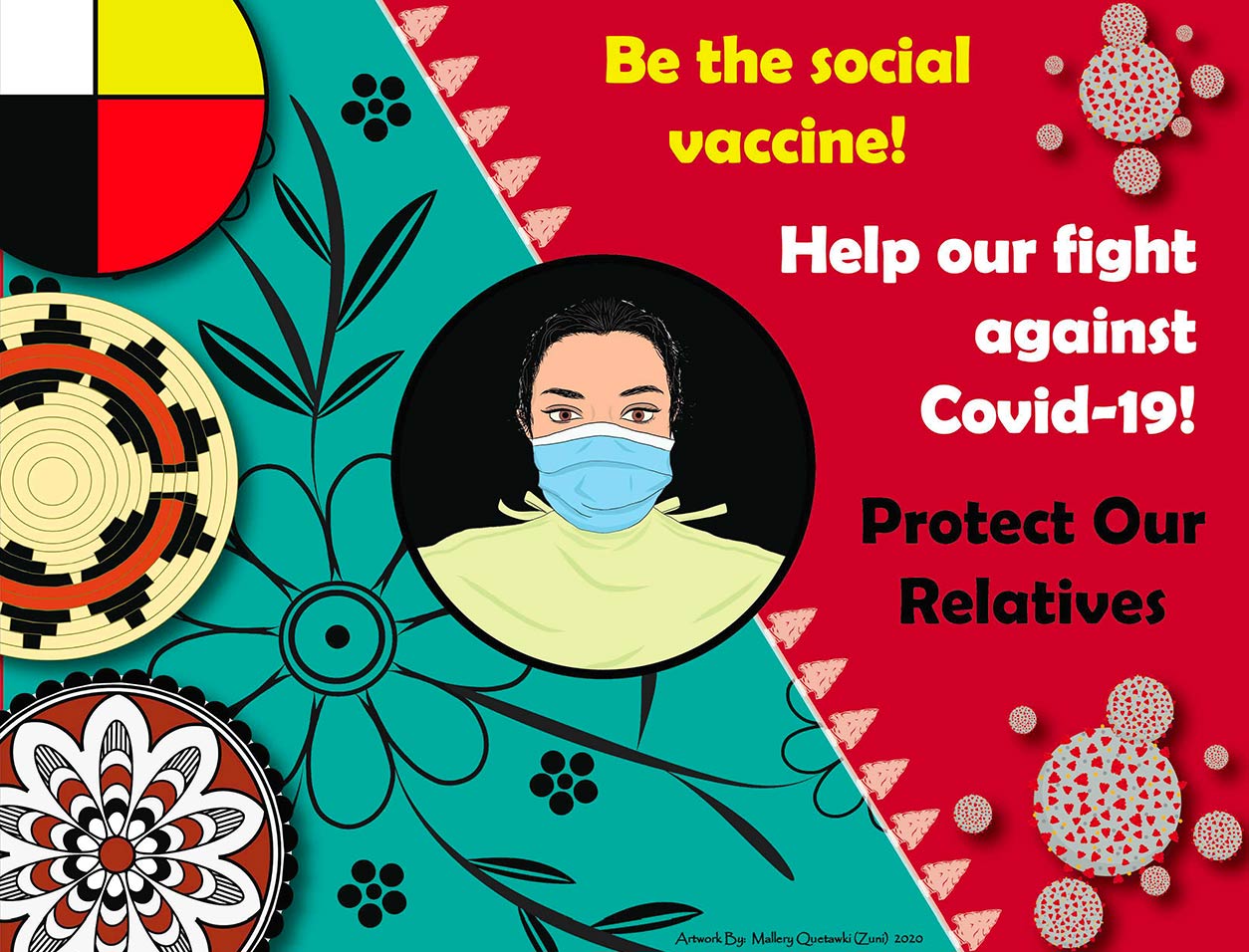 Mallery Quetawki, a staff member in Lewis’s program, creates artwork to communicate concepts such as social distancing with tribes around the country. (Photo courtesy of Johnnye Lewis)
Mallery Quetawki, a staff member in Lewis’s program, creates artwork to communicate concepts such as social distancing with tribes around the country. (Photo courtesy of Johnnye Lewis)“We are constantly trying to give people useful information, and we also work with the Navajo tribal offices,” noted Ingram. “That relationship-building has occurred over many years and helped us build trust,” she said, adding that those ties may be more important now than ever.
“The tribes have a long history of coming together in the face of adversity,” said Lewis, who has partnered with entrepreneurs, churches, and others during the pandemic to provide items such as hand sanitizer, diapers, and toilet paper to individuals in need (see sidebar). “The positive side of this crisis has been seeing how people have joined forces to help each other.”
Citations:
Credo J, Torkelson J, Rock T, Ingram JC. 2019. Quantification of elemental contaminants in unregulated water across western Navajo Nation. Int J Environ Res Public Health 16(15):2727.
Hund L, Bedrick EJ, Miller C, Huerta G, Nez T, Ramone S, Shuey C, Cajero M, Lewis J. 2015. A Bayesian framework for estimating disease risk due to exposure to uranium mine and mill waste on the Navajo Nation. J R Stat Soc A 178:1069–1091.
Luo L, Hudson LG, Lewis J, Lee JH. 2019. Two-step approach for assessing the health effects of environmental chemical mixtures: application to simulated datasets and real data from the Navajo Birth Cohort Study. Environ Health 18(1):46.
(Jesse Saffron, J.D., is a technical writer-editor in the NIEHS Office of Communications and Public Liaison.)






